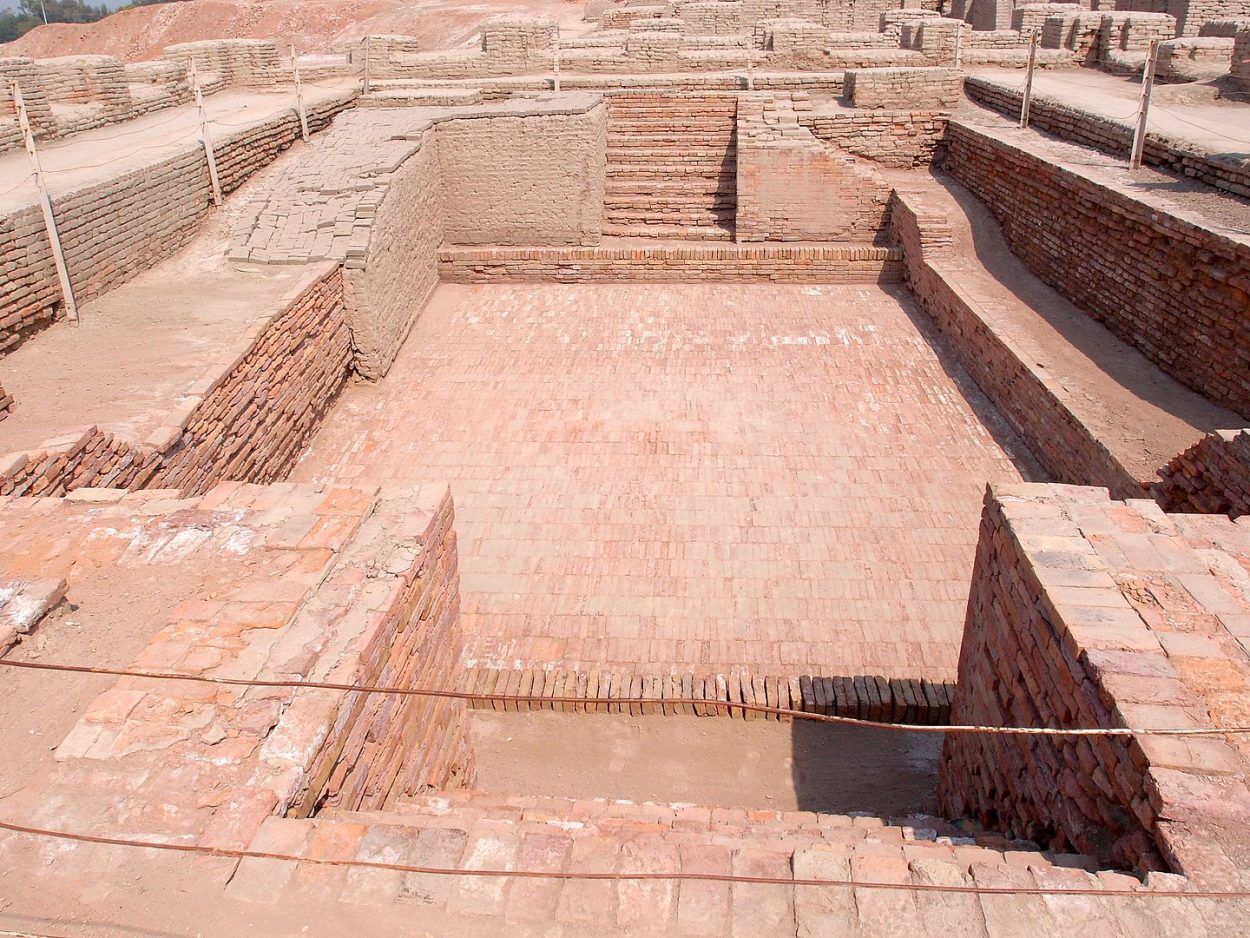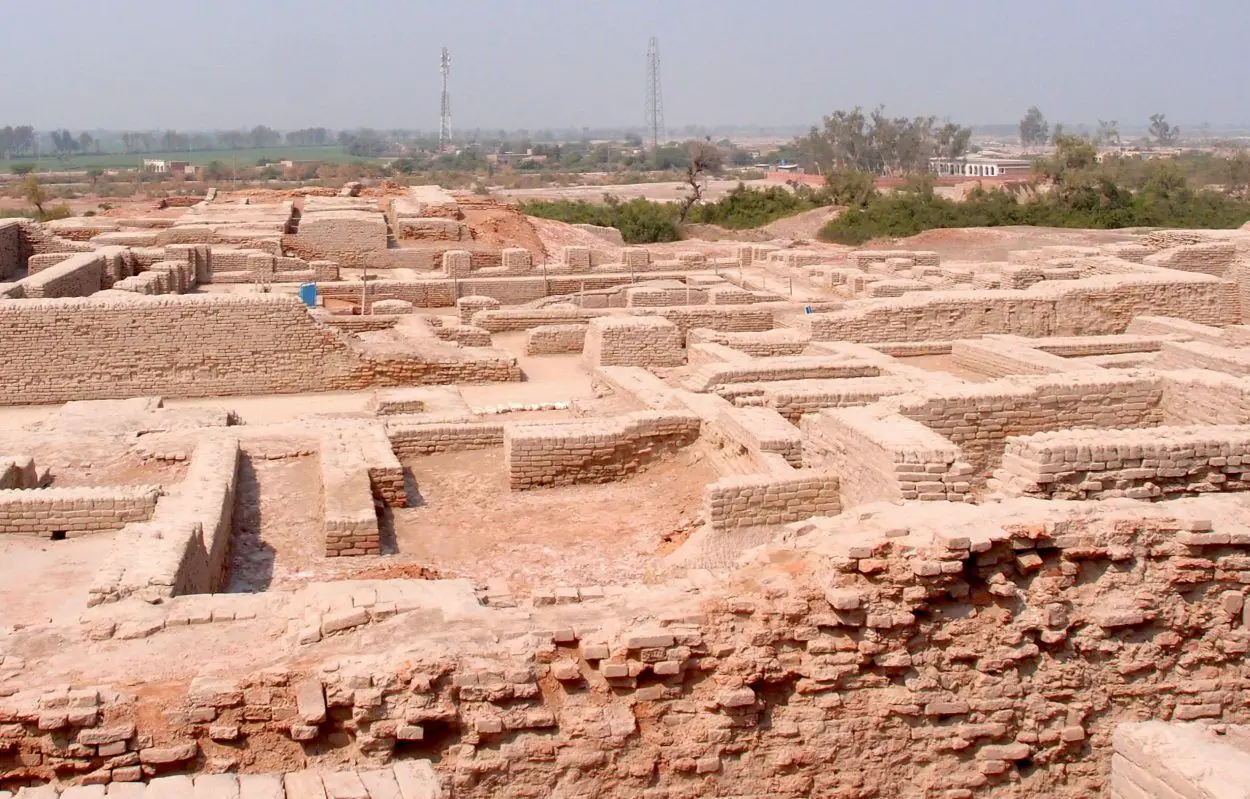Mohenjo-daro, meaning ‘Mound of the Dead Men’ is an archaeological site and ancient city complex located west of the Indus River in Larkana District, Sindh, Pakistan.
Mohenjo-daro was one of the largest settlements built by the Indus Valley Civilisation, also called the Harappan Civilization around 2500 BC which developed from the Prehistoric Indus Culture. At its peak, the Indus Civilisation controlled much of modern-day Pakistan, North India, and towards the Iranian Border.
The city was built in a relatively short period, with the first planned constructions being the water supply, sewers, and system of wells to support the inhabitants. With the excavations done so far, over 700 wells are present at Mohenjo-daro, alongside drainage and bathing systems.

Mohenjo-daro was designed on a grid plan layout, comprising of rectilinear buildings built from fired mortared bricks and sun-dried mud-brick that covered an area of 741 acres. The city is divided into two precincts, the lower city, and the high Citadel.
The Citadel is a mud-brick mound constructed to a height of 12 metres that included public baths, a large residential structure, and two large assembly halls. At the centre of the city is a central market surrounded by residential dwellings and high-status multi-storey dwellings that contain a courtyard.

The city contained several public buildings including a large bathing complex, sometimes called the Great Bath. Other large buildings include a “Pillared Hall” that functioned as an assembly hall and the “College Hall” thought to be a ceremonial residence.
Unlike many Bronze Age cities of the time, Mohenjo-daro wasn’t fortified with a defensive wall, instead, a series of guard towers and fortifications were constructed to the west and south of the main settlement.
Mohenjo-daro was abandoned in the 19th century BC as the Indus Valley Civilization declined. The theory to explain the abandonment is suggested by a series of mud flooding that wiped out part, or all the city, paired with an exhaustion of the natural resources and agriculture.
The site was rediscovered by R. D. Banerji, an officer of the Archaeological Survey of India who visited the site in 1919-1920. This led to a series of excavations in 1924–25, 1925–26, and during the 1930’s. After 1965 excavations were banned due to weathering damage to the exposed structures, and the only projects allowed at the site since have been salvage excavations, surface surveys, and conservation projects.
Header Image Credit :







